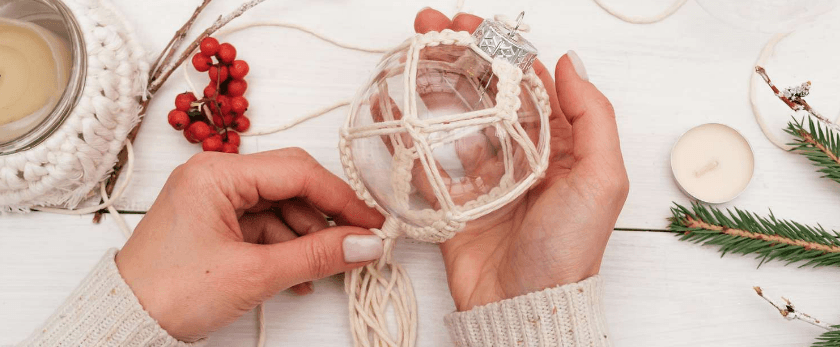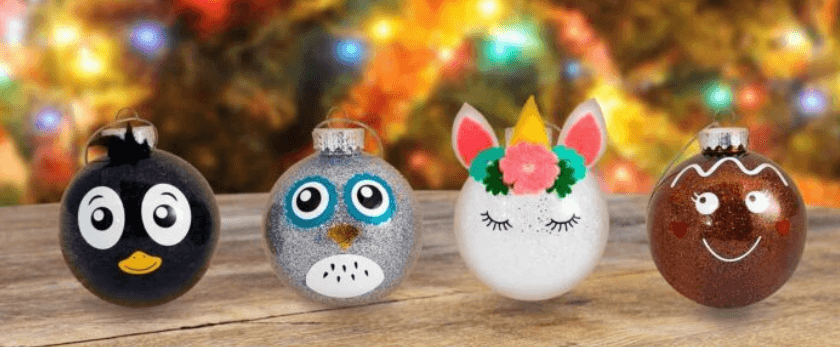As the holiday season approaches...
As the holiday season approaches, many of us are looking for ways to make our celebrations more eco-friendly. One simple and fun way to do this is by making your own Christmas ornaments. Not only is it a great way to reduce waste and save money, but it also allows you to add a personal touch to your holiday decor. In this article, we will discuss why traditional Christmas ornaments can be harmful to the environment, the benefits of making your own, and provide step-by-step instructions for creating your own homemade ornaments.
Why Traditional Christmas Ornaments are Bad for the Environment
Most traditional Christmas ornaments are made from plastic, which is a major contributor to pollution and environmental degradation. Plastic is not biodegradable and can take hundreds of years to decompose, releasing harmful chemicals into the environment in the process. Additionally, the production of plastic ornaments requires the use of fossil fuels, which contribute to climate change.
Furthermore, many traditional ornaments are mass-produced in factories, often in developing countries with lax environmental regulations. This not only contributes to carbon emissions from transportation but also leads to the exploitation of workers and the depletion of natural resources.
Another issue with traditional ornaments is their packaging. Most are packaged in plastic or non-recyclable materials, which end up in landfills and contribute to the growing waste problem.

Why Making Your Own Ornaments is Better for the Environment
Making your own Christmas ornaments is a simple and effective way to reduce your environmental impact. By using materials that are already in your home or can be easily sourced from nature, you can avoid contributing to the production and disposal of plastic ornaments.
Additionally, making your own ornaments allows you to get creative and use materials that are more sustainable and eco-friendly. For example, you can use recycled paper, fabric scraps, natural materials like pinecones and twigs, or even repurpose old items like bottle caps or CDs.
Making your own ornaments also reduces the need for packaging, as you can simply use materials you already have at home. This not only reduces waste but also saves you money.
What You Will Need
The materials needed for making homemade Christmas ornaments will vary depending on the type of ornament you want to create. However, here are some basic supplies that you may need:
- Recycled or natural materials (paper, fabric, pinecones, twigs, etc.)
- Scissors
- Glue or tape
- Paint and paintbrushes
- Ribbon or string
- Glitter or other decorative materials
- Optional: hot glue gun, needle and thread, markers or pens
Directions for Making Homemade Christmas Ornaments
1. Paper Ornaments
Paper ornaments are easy to make and can be customized in various shapes and designs. Here's how to make a simple paper ornament:
- Cut a piece of paper into a square shape.
- Fold the paper in half diagonally to form a triangle.
- Fold the triangle in half again to form a smaller triangle.
- Cut small slits along the folded edges, leaving a small space in the middle.
- Unfold the paper and gently push the slits outwards to create a 3D effect.
- Decorate the ornament with paint, glitter, or markers.
- Punch a hole at the top and thread a ribbon or string through it for hanging.
2. Fabric Ornaments
Fabric ornaments are a great way to use up fabric scraps and add a cozy touch to your Christmas tree. Here's how to make a simple fabric ornament:
- Cut two pieces of fabric into the desired shape (circle, star, heart, etc.).
- Place the two pieces of fabric together, with the right sides facing each other.
- Sew around the edges, leaving a small opening for stuffing.
- Turn the ornament inside out and stuff it with cotton or other filling.
- Sew the opening closed.
- Decorate the ornament with paint, buttons, or embroidery.
- Attach a ribbon or string for hanging.
3. Natural Ornaments
Using natural materials for ornaments not only reduces waste but also adds a rustic and natural touch to your holiday decor. Here's how to make a simple pinecone ornament:
- Collect pinecones from your backyard or a nearby park.
- Paint the pinecone with white or silver paint for a snowy effect.
- Sprinkle glitter over the wet paint for added sparkle.
- Let the paint dry completely.
- Attach a ribbon or string to the top of the pinecone for hanging.
4. Upcycled Ornaments
Upcycling old items is a great way to give them a new life and reduce waste. Here's how to make a simple bottle cap ornament:
- Collect bottle caps from plastic or glass bottles.
- Paint the bottle caps with acrylic paint in your desired color.
- Let the paint dry completely.
- Use a hot glue gun to attach the bottle caps together in a circular shape.
- Decorate the ornament with glitter, beads, or other decorative materials.
- Attach a ribbon or string for hanging.
Proper Disposal of Traditional Ornaments
If you already have traditional Christmas ornaments that you no longer want to use, it's important to dispose of them properly. Here are some options for responsible disposal:
- Donate them to a thrift store or charity.
- Repurpose them for other crafts or decorations.
- Recycle them if they are made from recyclable materials.
- If they are not recyclable, dispose of them in the trash.
Conclusion
Making your own Christmas ornaments is a simple and fun way to reduce your environmental impact and add a personal touch to your holiday decor. By using recycled or natural materials, you can avoid contributing to the production and disposal of plastic ornaments. So this holiday season, get creative and make your own ornaments for a more sustainable and meaningful celebration.










